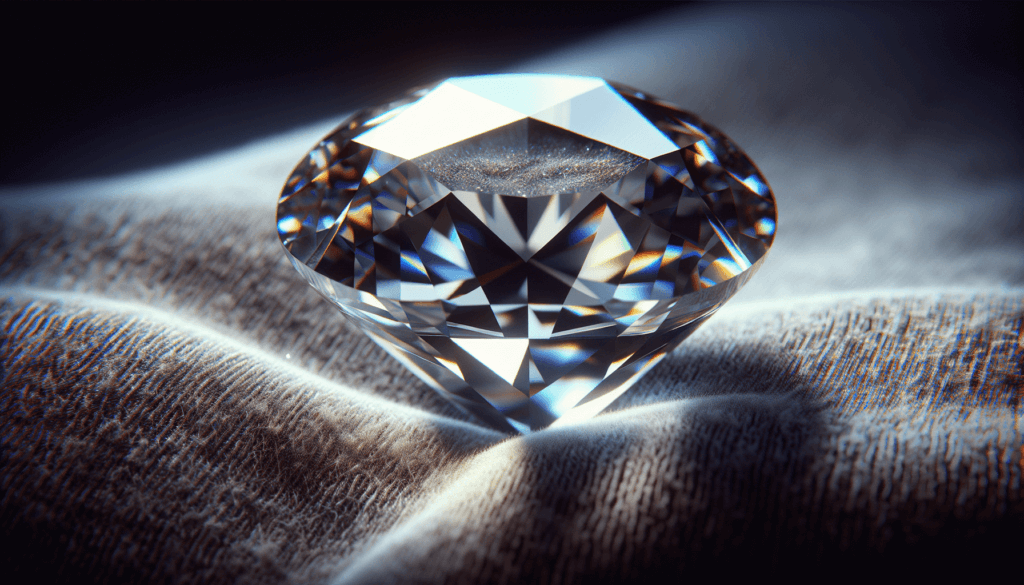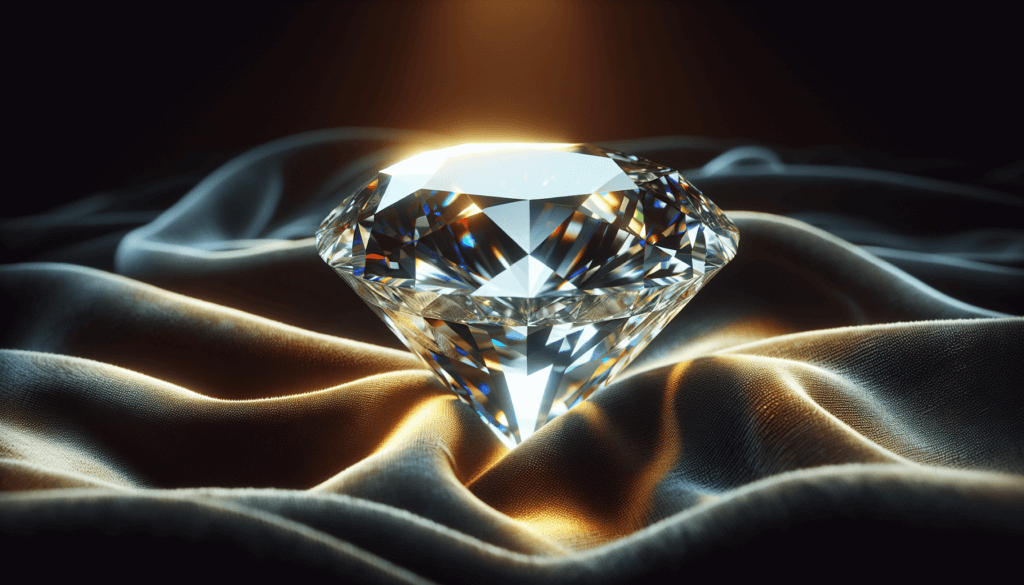You’re about to embark on an intriguing journey, exploring the intrinsic value of diamonds. Whether seen as steady investments or merely shiny stones, diamonds have long stirred debates about their worth. The article “Are Diamonds Really Worth the Money?” is poised to offer insights from both ends of the spectrum, shedding light on aspects that go beyond the glitter, price tags, and the hype from advertisers. This reading could potentially empower you to make informed decisions the next time you mull buying that diamond ring or pendant.

The History of Diamond Valuation
You might be intrigued to learn about the fascinating history of diamond valuation. A story intertwined with beauty, value, and a sense of timeless charm.
Historical significance of diamonds
Diamonds have enchanted human beings for thousands of years, and their historical significance is wide and varied. These precious stones were treasured in ancient cultures, who often associated them with magical powers and used them for medicinal purposes. It was not until the 19th century, however, when large deposits were discovered in South Africa, that diamonds became accessible to a wider audience and started to gain the high monetary value they enjoy today.
How diamonds gained their high monetary value
The high monetary value of diamonds didn’t come about naturally. It was a result of a scarcity principle – the less there is of something, the more it is worth. The scarcity of diamonds, combined with their unchallenged beauty and symbolism, ultimately contributed to their high value. Furthermore, the cost of mining, cutting, and polishing also added to their overall worth.
Role of the De Beers company
One cannot discuss the history of diamond valuation without mentioning the De Beers company. Established in the 1880s after a major diamond rush in South Africa, De Beers effectively monopolized the diamond market for a long period. This company created a supply-demand balance, controlling the production and distribution of diamonds. This tactic kept prices high, establishing diamonds as a symbol of luxury and wealth.
The Four ‘C’s of Diamonds
Understanding the true value of diamonds means getting familiar with the four ‘C’s. The factors that generally determine the value of a diamond are carat, cut, color, and clarity.
Understanding carat, cut, color, and clarity
Diamonds are assessed based on the four C’s — carat, cut, color, and clarity. The carat refers to the weight of the diamond. Color is evaluated based on a scale from light to dark. Cut refers to how well the diamond is cut, not the shape, but rather the brilliance and sparkle of the diamond. Lastly, clarity refers to the absence of inclusions or blemishes.
How these factors influence diamond value
Each of the four ‘C’s plays a crucial role in a diamond’s value. A larger carat weight, exceptional cut, perfect clarity, and a color grade closer to colorless can drastically increase a diamond’s value. Therefore, a slight change in any of these factors can significantly impact the price, making it essential for potential buyers to fully comprehend these factors when purchasing a diamond.

Diamond Mining and Its Impact
While diamonds captivate us with their brilliance, it’s important to understand the impact of diamond mining on our environment and societies.
Environmental concerns
Diamond mining poses significant environmental challenges, particularly in terms of land disturbance and water usage. With the extensive excavation process, it can lead to deforestation, soil erosion, and other harmful environmental changes. Additionally, chemical leaks or spillages during the mining process can result in water pollution, affecting local ecosystems and community health.
Ethical considerations in diamond mining
Along with environmental issues, ethical dilemmas often surround diamond mining. Cases of forced labor, child labor, and poor working conditions have frequently been associated with diamond trade, particularly in conflict-prone zones. This led to international outrage and the creation of the ‘Kimberley Process’ to prevent ‘blood diamonds’ from entering the market.
The economies of diamond-mining countries
Despite these concerns, diamond mining has an essential role in the economies of diamond-rich countries. The export revenue from diamonds provides much-needed fiscal resources, employment, and development opportunities. However, to sustainably harness these benefits, it’s critical that these nations enforce ethical mining practices, ensuring workers’ rights, and initiating measures to safeguard the environment.
The Marketing and Branding of Diamonds
Diamonds are not just precious stones; they have been cleverly marketed to possess a symbolic value that increases their desirability and value.
Evolution of diamond advertising
Diamond advertising has evolved over time, moving from a focus on the luxury and rarity of diamonds to the emotional value associated with them. The most memorable campaign might be De Beer’s “A Diamond is Forever” from the 1940s. It associated diamonds with eternal love and commitment, which significantly drove diamond demand from engaged and married couples.
Effect of successful diamond marketing campaigns
Advertising campaigns like these transformed how society perceived diamonds, making them the quintessential token of love and commitment. The effect was profound; diamond engagement rings, which were a regional trend, became a global custom, further stoking demand and solidifying the diamond’s cultural significance.
Impact of branding on diamond prices
Branding played a pivotal role in maintaining high diamond prices. Renowned brands with distinctive diamond cuts and quality standards managed to create a niche market for their stones. Coupled with aggressive advertising, they made their diamonds appear more desirable, allowing them to command a higher price than unbranded diamonds.

Diamonds as a Symbol of Wealth and Status
The appeal of diamonds extends beyond their sparkly allure; they’re deeply ingrained symbols of wealth and status.
Societal views of diamonds as status symbols
Throughout history, diamonds have always been a symbol of wealth, primarily due to their rarity, costliness, and the power associated with owning such a precious item. As such, societies often perceive those who own diamonds as affluent and influential.
Diamonds in the luxury goods and fashion sector
In the luxury goods and fashion industry, diamonds are considered ‘the king of all gems’, gracing the creations of many high-end brands. In fact, a diamond’s presence can significantly increase the value of jewelry or a fashion item, reinforcing diamonds as a status symbol.
The role of diamonds in engagement and wedding traditions
Diamonds also play an integral role in engagement and wedding traditions. The placement of a diamond on an engagement ring signifies a promise of marriage—a tradition popularized by marketing campaigns. This tradition has solidified the status of diamonds as the symbol of love and commitment, making them nearly indispensable in today’s weddings.
Diamonds as Investment Assets
Despite their beauty and symbolism, diamonds aren’t just for wear or show – they can be investment assets too.
Investment potential of diamonds
Diamonds have demonstrated their worth as an investment asset. Their value has increased over the years, making them a potentially profitable addition to an investment portfolio. Plus, their tangibility offers a sense of security that intangible assets can’t provide.
Comparison of diamonds to traditional investment assets
Compared to traditional investment assets like stocks or bonds, diamonds are not exposed to political or economic fluctuations, making them relatively stable. However, the lack of a universal price index and low liquidity compared to traditional assets make diamonds a complex and long-term investment.
Risks and rewards of investing in diamonds
Investing in diamonds comes with its own set of risks and rewards. While the long-term appreciation potential and their ability to serve as a hedge against economic downturns are attractive, the unregulated nature of the market and the challenge of accurately assessing a diamond’s value pose potential risks.
Alternatives to Diamonds
Despite their allure, diamonds aren’t the only option if you’re seeking that special shimmer. Many alternatives present their unique charm and advantages.
Popular diamond alternatives
There are several popular diamond alternatives in the market, including moissanite, white sapphire, cubic zirconia, and even lab-grown diamonds. These stones provide the same visual appeal as natural diamonds but at a fraction of the price.
Comparative analysis of diamond alternatives vs. real diamonds
While real diamonds have unrivaled hardness, brilliance, and heritage, diamond alternatives offer affordable luxury. Some, like moissanite, surpass even diamonds in their brilliance and fire. Lab-grown diamonds share the same physical and chemical properties as mined diamonds, offering an ethical and eco-friendlier option.
Market trends around alternatives to diamonds
There’s been a rising trend for alternatives to diamonds, especially amongst younger, ethically and environmentally-conscious consumers. As these trends continue to evolve, it’s fascinating to see how it will shape the future of precious stones, particularly diamonds.
The Future of Diamonds
As we gaze into the not-so-distant future of diamonds, there are some emerging trends and challenges that are likely to shape the landscape.
Potential shortage of natural diamonds
Mining companies have reported decreasing accessibility to diamond-rich ores, predicting a potential future shortage of natural diamonds. This could further increase the value of diamonds, or prompt a rise in demand for lab-grown alternatives.
Rise of lab-grown diamonds
The advent of lab-grown diamonds has posed a new dynamic in the diamond industry. These diamonds, physically and chemically identical to naturally mined diamonds but much cheaper to produce, offer an ethical and sustainable alternative to mined diamonds.
Future market predictions for diamonds
While the future is uncertain, experts predict that diamonds will continue to be valued for their symbolism and natural beauty. However, the diamond industry will need to adapt to shifting consumer preferences and emerging alternatives.
Comparative Analysis of Diamond Prices
Understanding what influences the price of diamonds can give you some insight into the reasons behind their cost.
Fluctuations in diamond pricing
Diamond pricing can fluctuate based on a variety of factors, including market demand, mining costs, and changes in grading standards. Other influencing factors can be geopolitical, like changes in import and export regulations or shifts in currency valuations.
Comparing diamonds to other precious stones
When compared to other precious stones like rubies, sapphires, or emeralds, diamonds often come with a higher price tag. This premium is largely due to a diamond’s unmatched hardness, brilliance, and the substantial effort taken to mine, cut, and polish them.
Growth in diamond prices
While there may be short-term fluctuations, diamond prices have reliably grown over time. This continuing growth reflects diamonds’ enduring appeal and their resilience against market volatility.
Consumer Perception of Diamond Worth
How consumers perceive a diamond’s worth significantly plays into its value.
Societal perception of diamond value
Societal perceptions largely determine a diamond’s worth. Diamonds are seen as a luxury item, signifying wealth and status. This perception, buoyed by effective marketing campaigns, contributes to their substantial monetary value.
Changing trends in diamond appreciation
Over the years, trends in diamond appreciation have evolved. There is a growing preference for quality over size, with many buyers choosing smaller diamonds with superior cuts, clarity, and color rather than larger diamonds of lesser quality.
Consumer willingness to pay for diamonds
Consumer willingness to pay for diamonds hinges on their income, perceived value, and societal norms. Many consumers are willing to pay a premium for diamonds, not just for their beauty, but what they symbolize – whether that’s love, power or status.
All in all, it’s subjective whether diamonds are worth the money. Ultimately, the value of a diamond lies not just in its monetary evaluation or physical properties, but also in what it means to the person who owns it.



